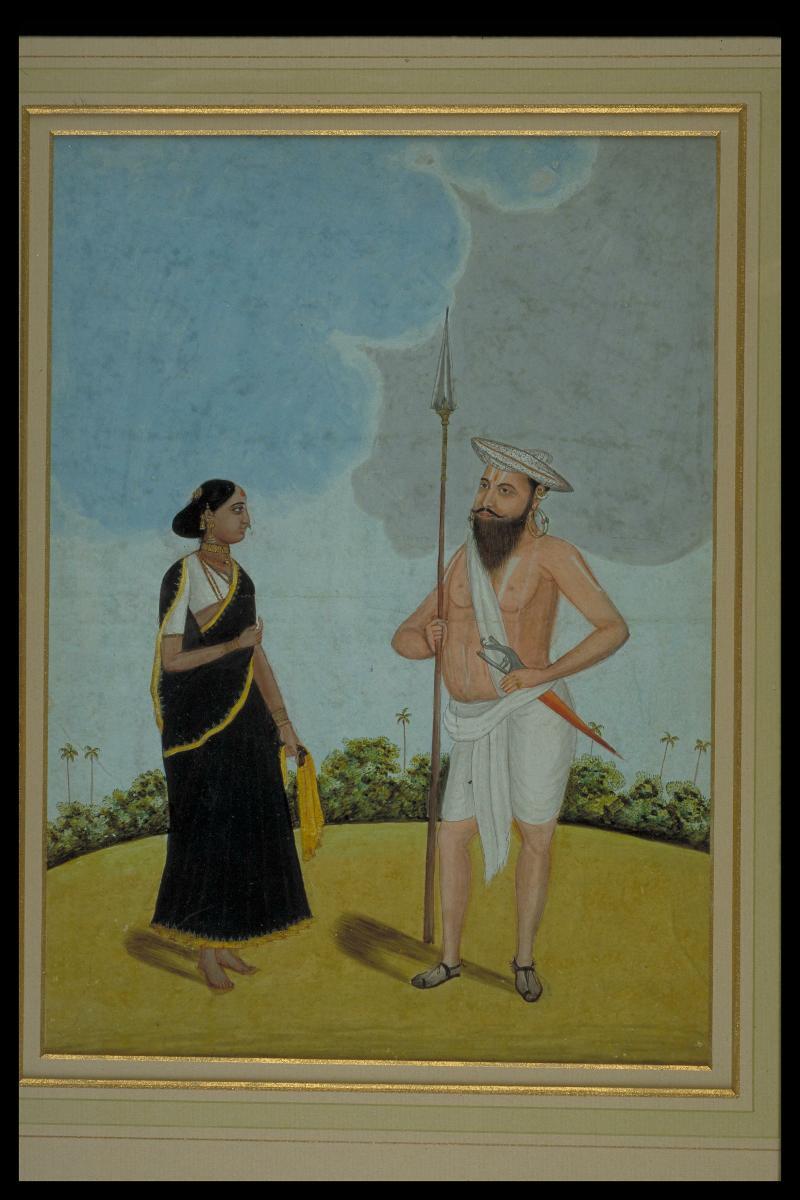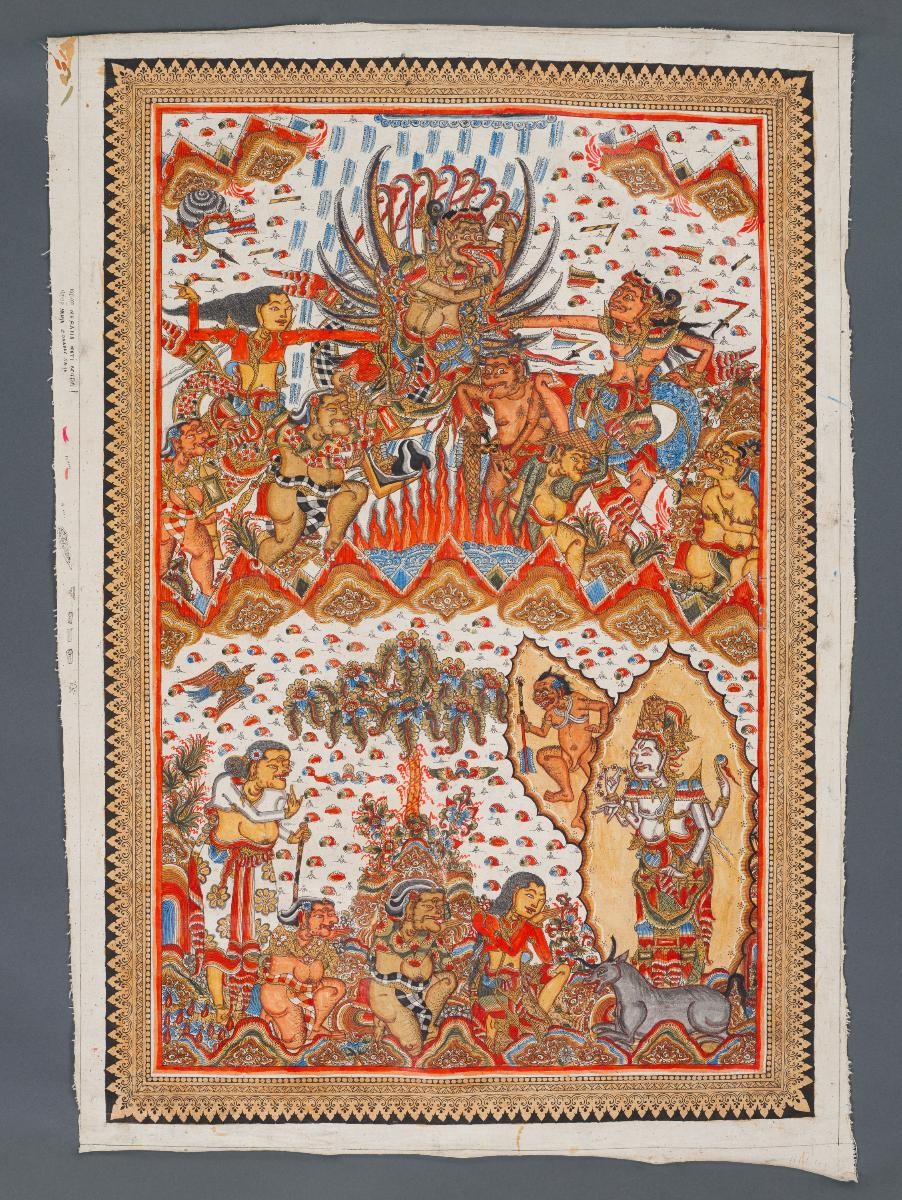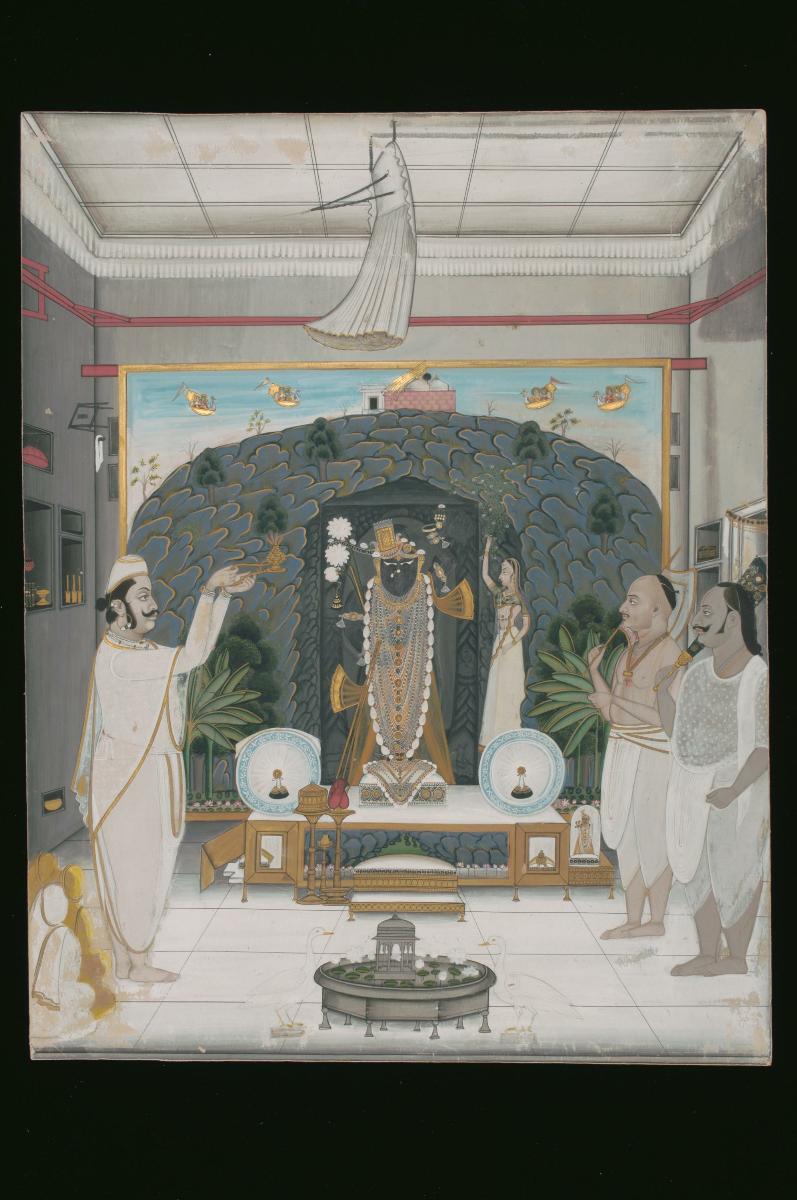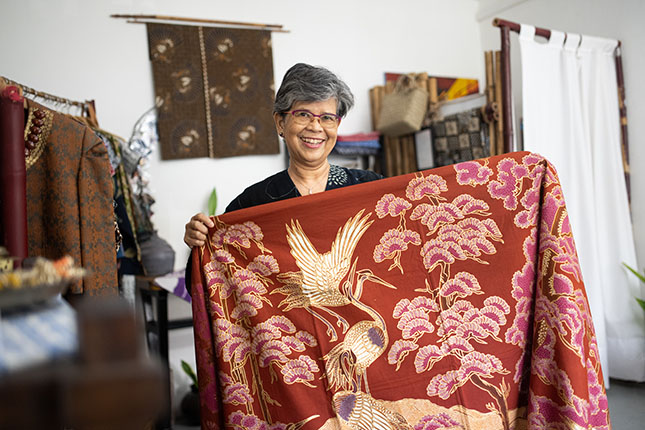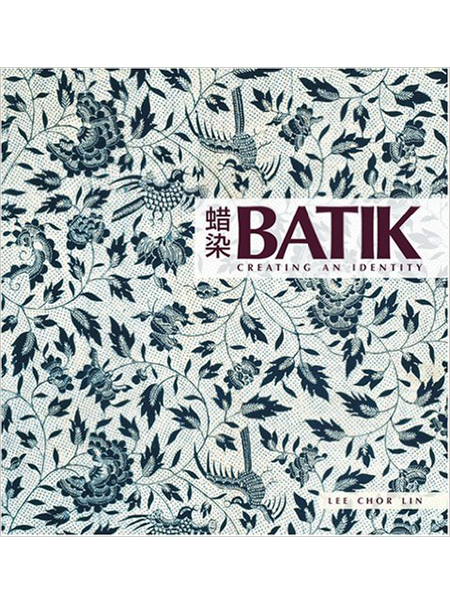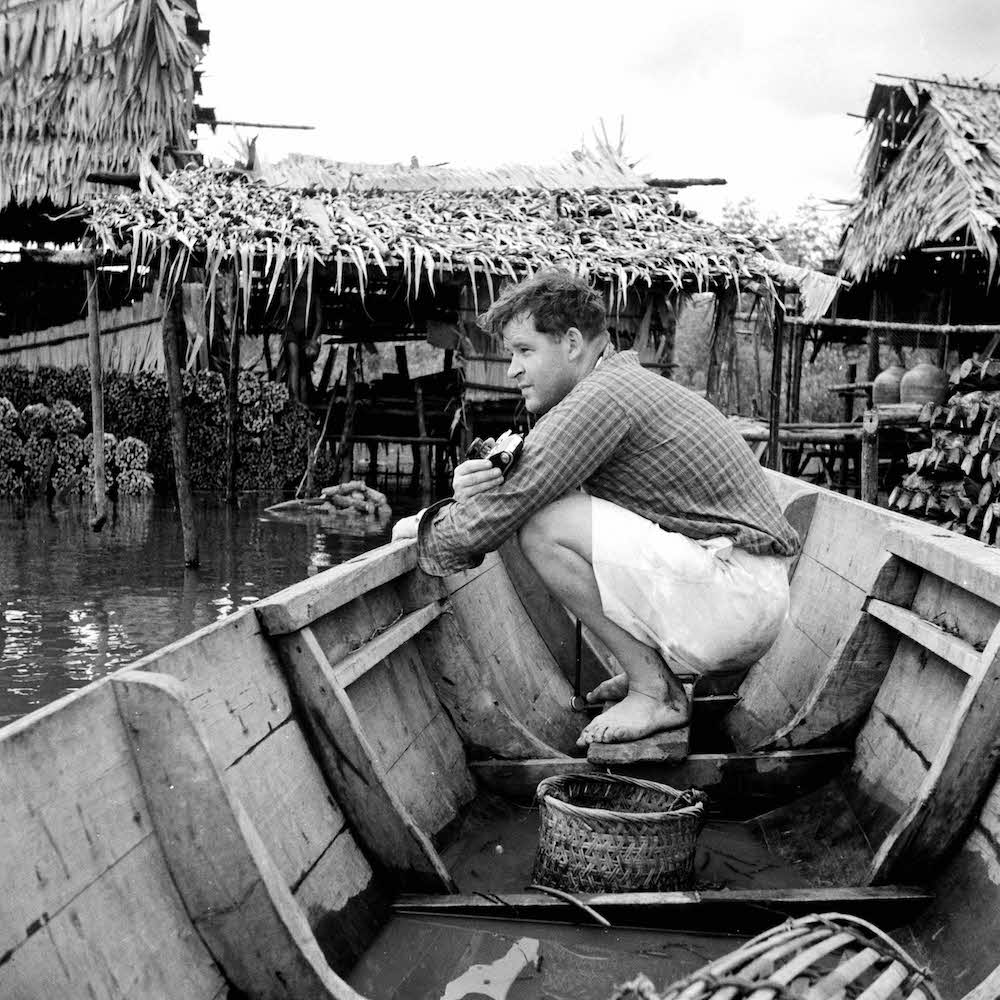This painting depicts a shadow puppet of Darmokusumo, a localized name used to refer to the character of Yudhisthira in the Mahabharata stories. Hindu epics such as the Mahabharata and Ramayana were commonly performed in the Javanese “wayang kulit” or leather shadow puppet theatre tradition. Characters and episodes from these Hindu epics were adapted and indigenised to suit local Javanese communities which were predominantly Muslim. In the Mahabharata tales, Yudhistira is known as the eldest of five Pandawa brothers. As reflected in this painting, Darmokusumo (or Yudhistira) is usually portrayed with a black face, a downward gaze and a sharply pointed nose which reflect his noble status as well as his sophisticated and scholarly character. The Passepartout surrounding the painting is made of pattered paper depicting the kawung motif, one of the oldest batik patterns. The kawung motif which is made of circular patterns grouped together, can be traced historically to the Hindu-Javanese period in Java and can be found in Javanese temple architecture dated to that time.





